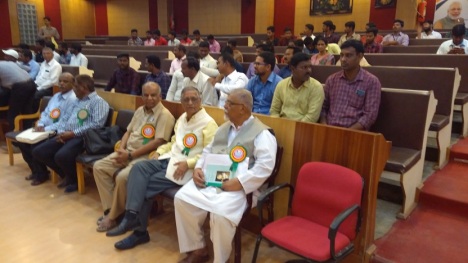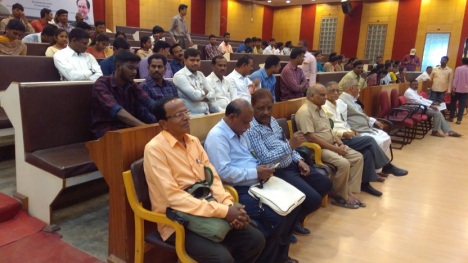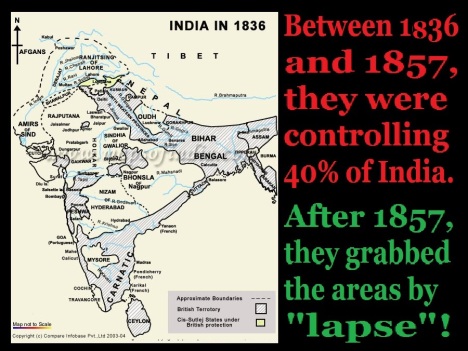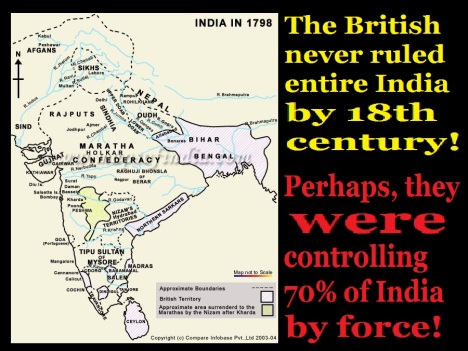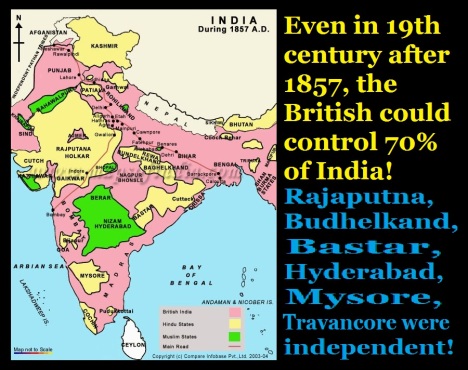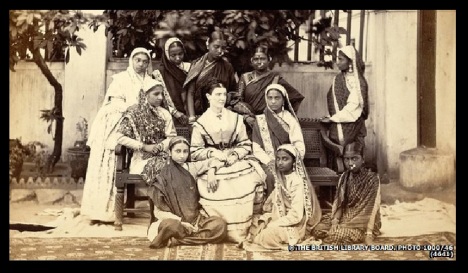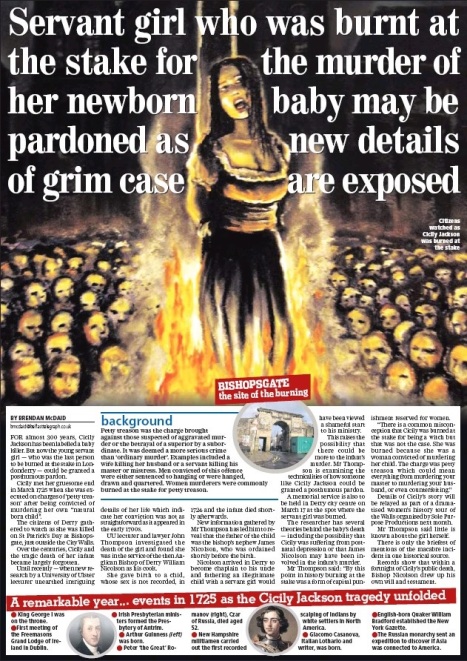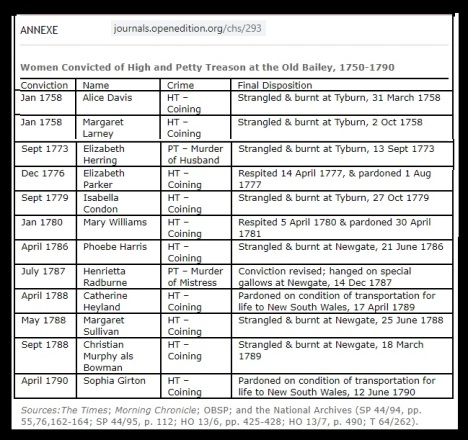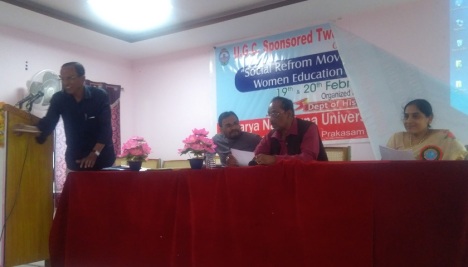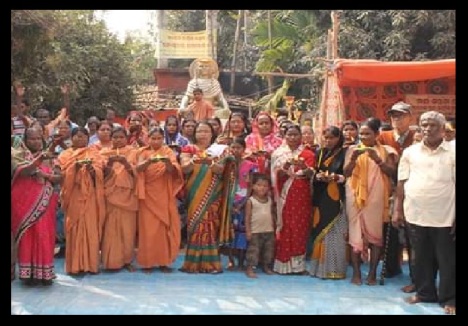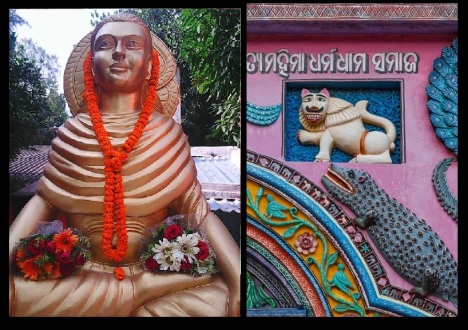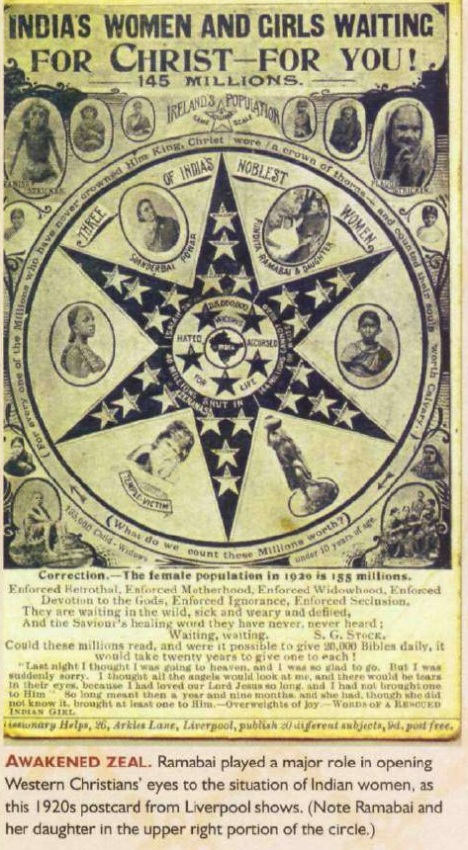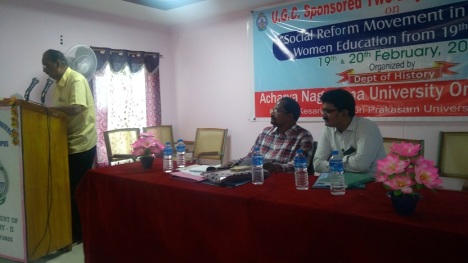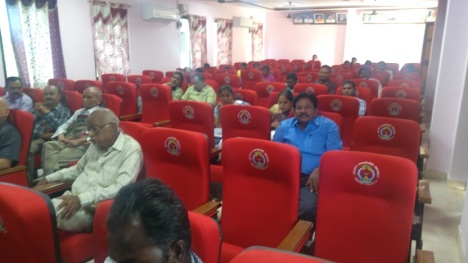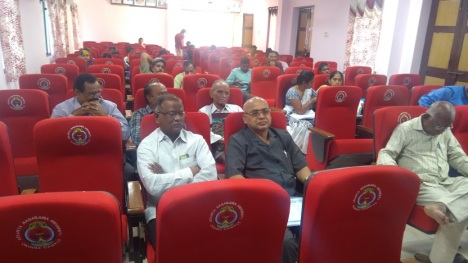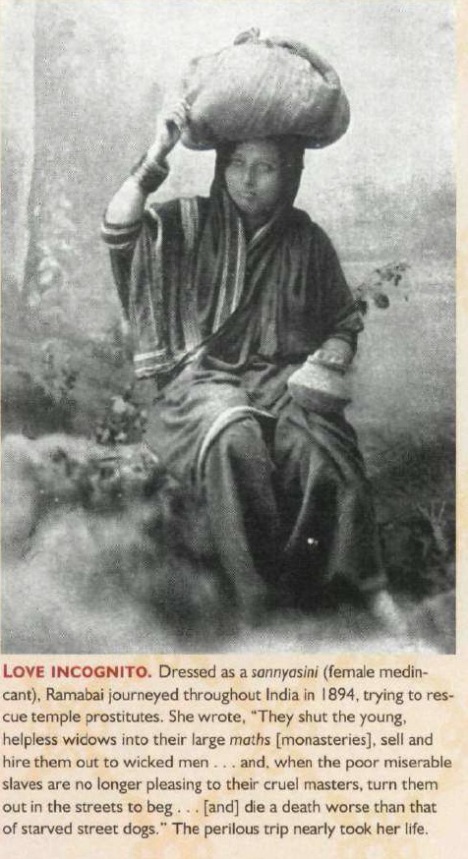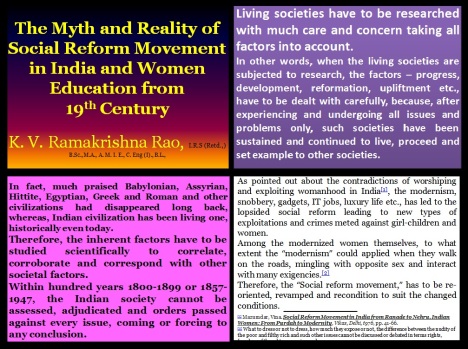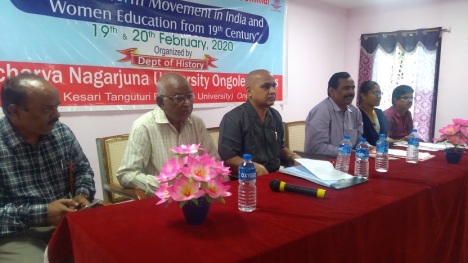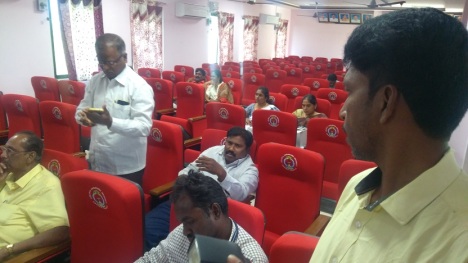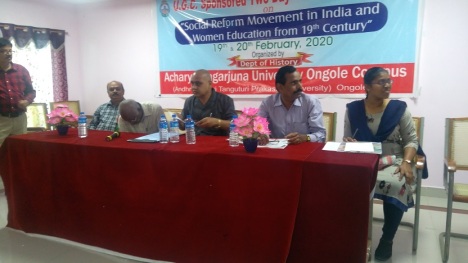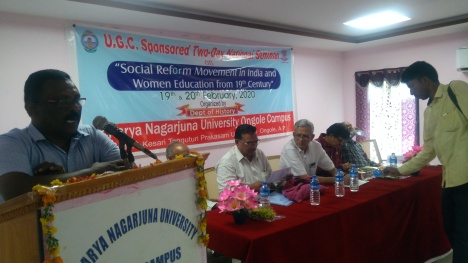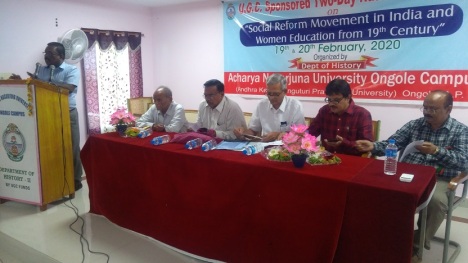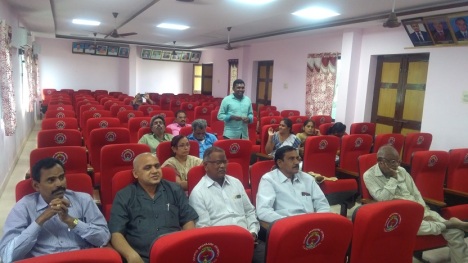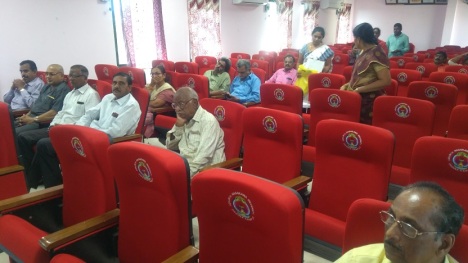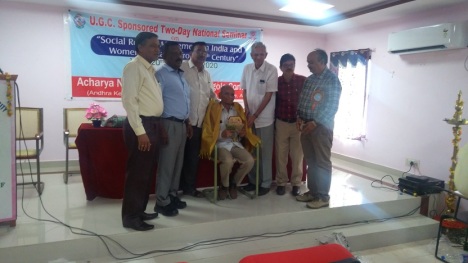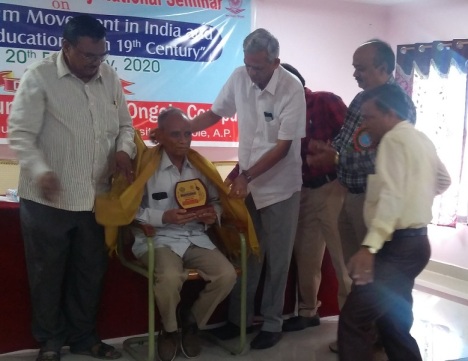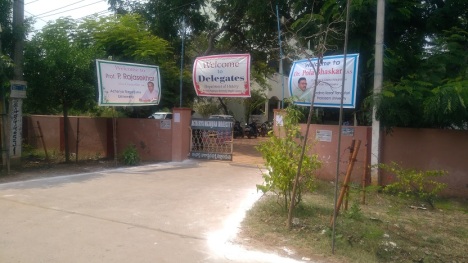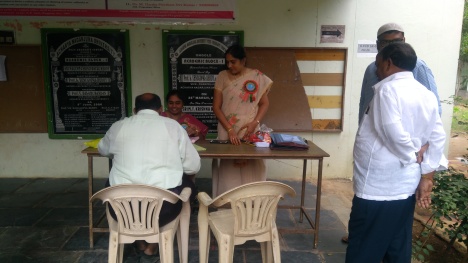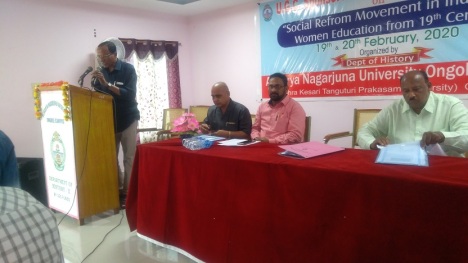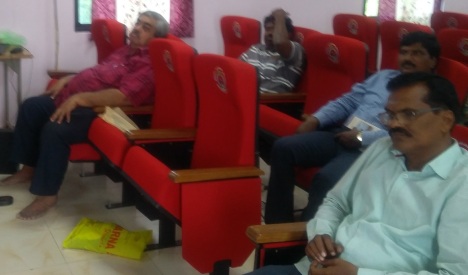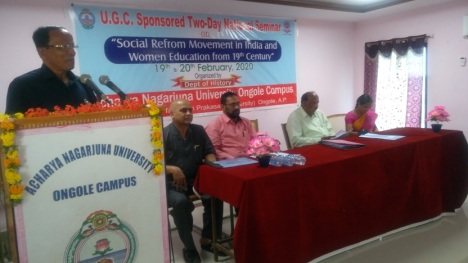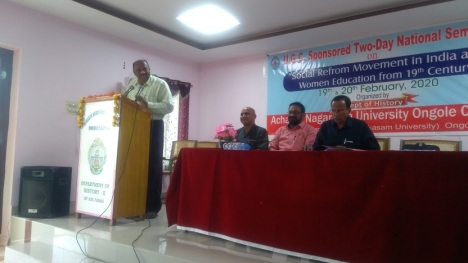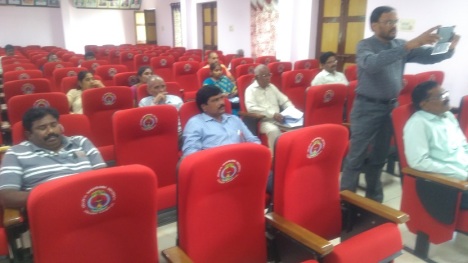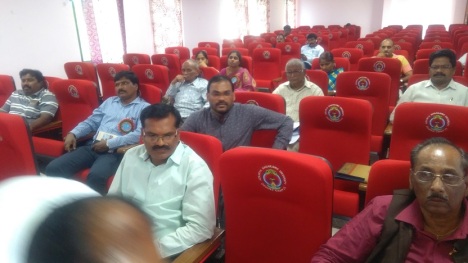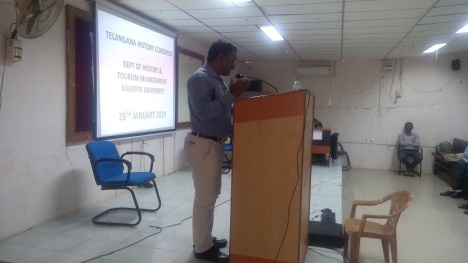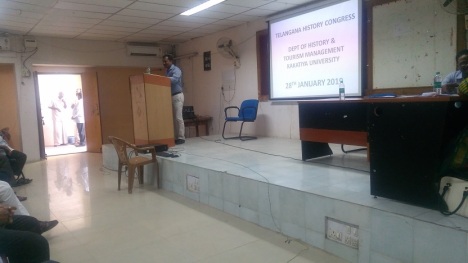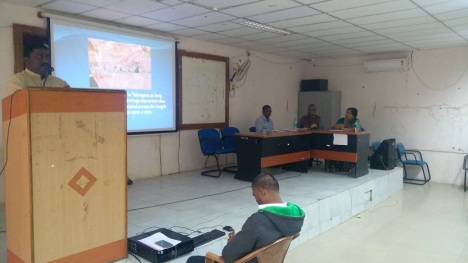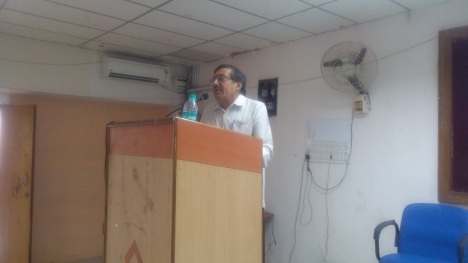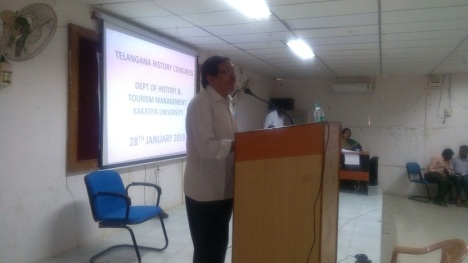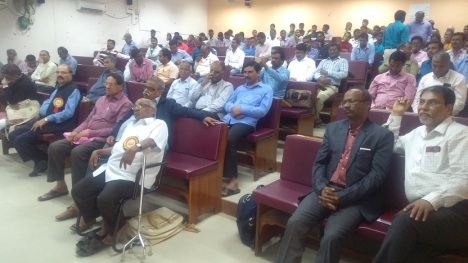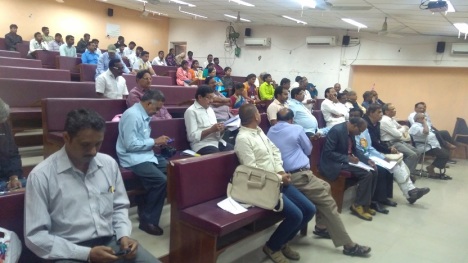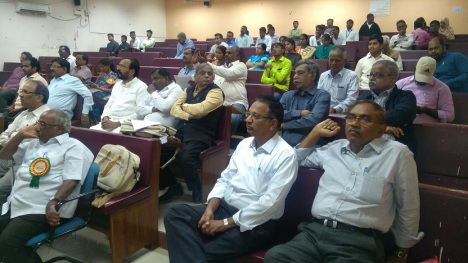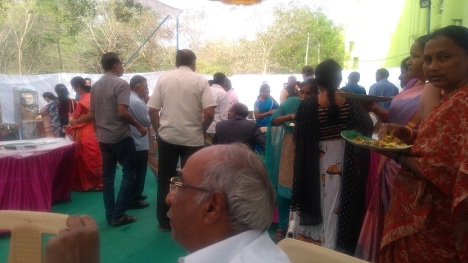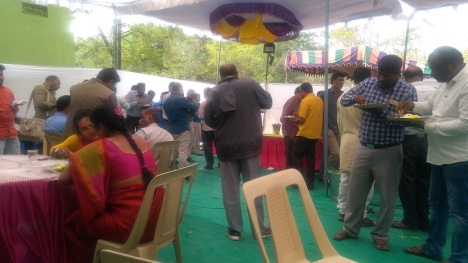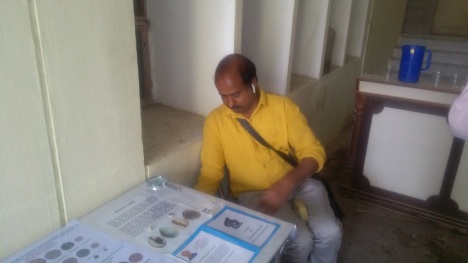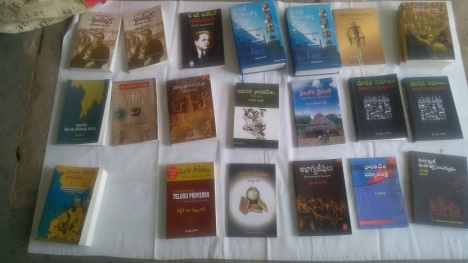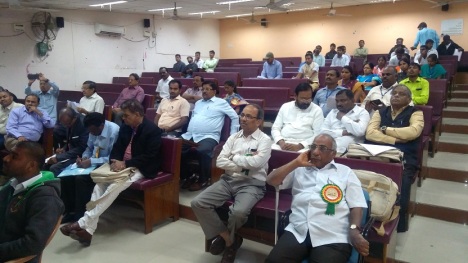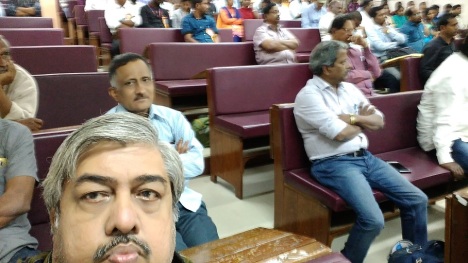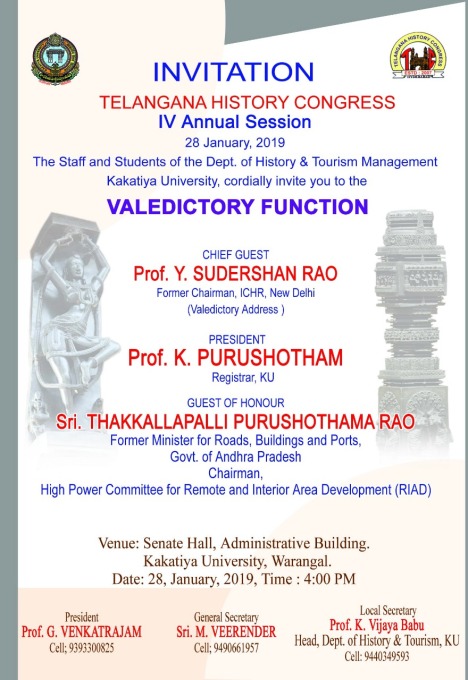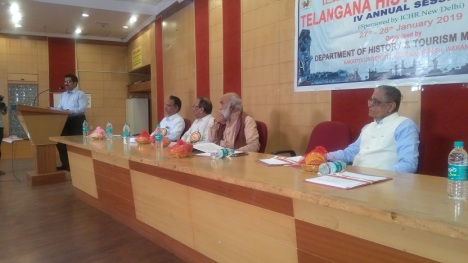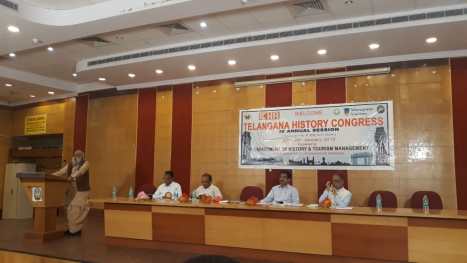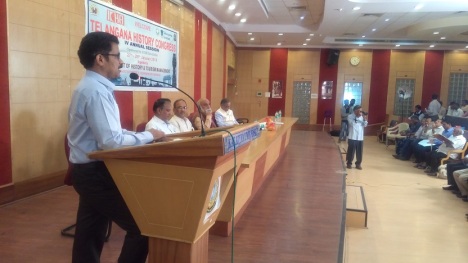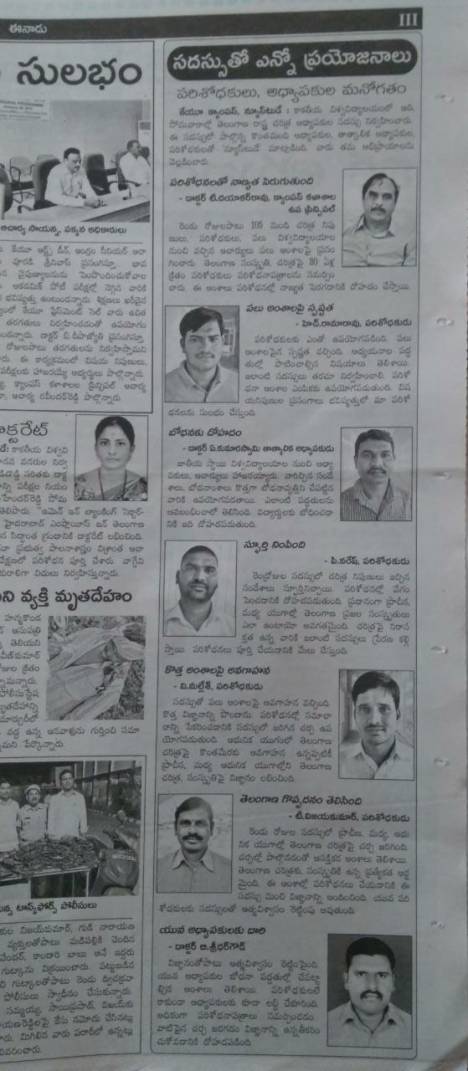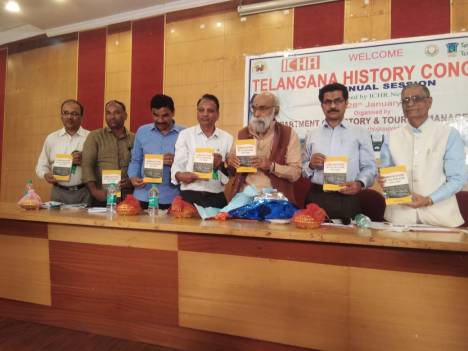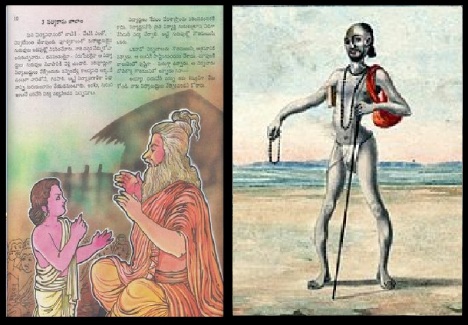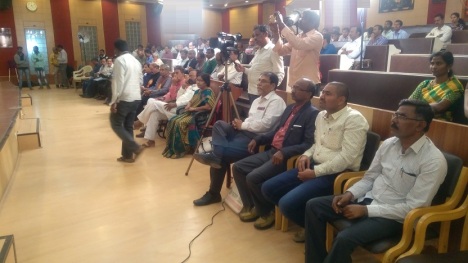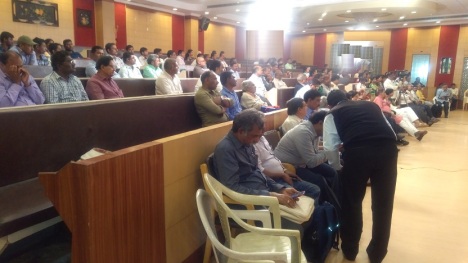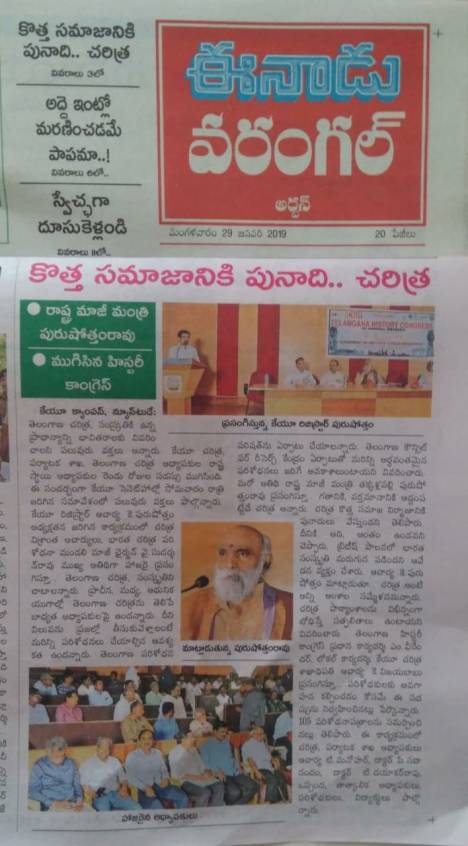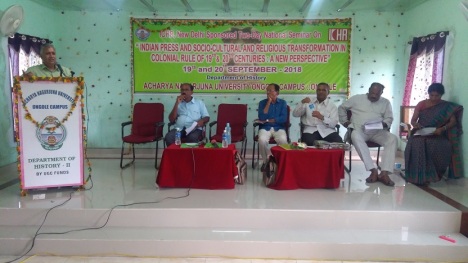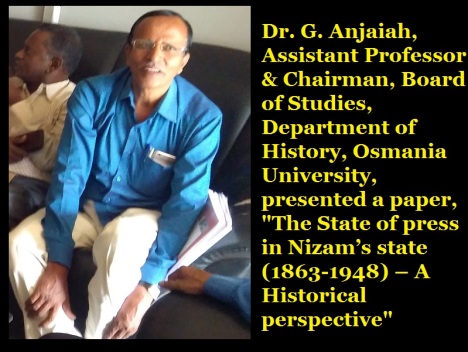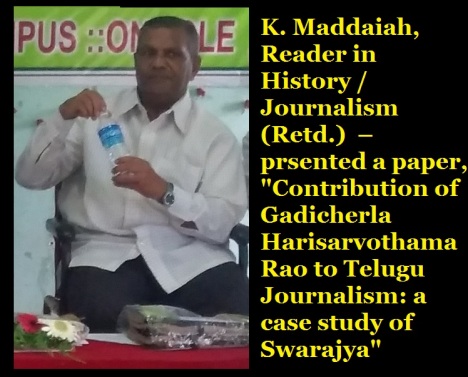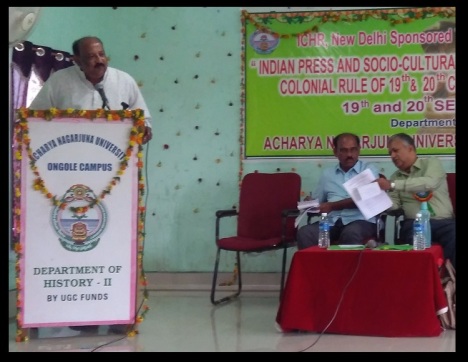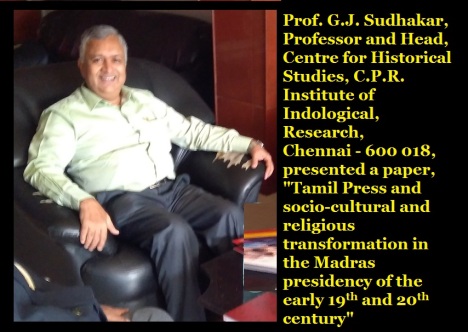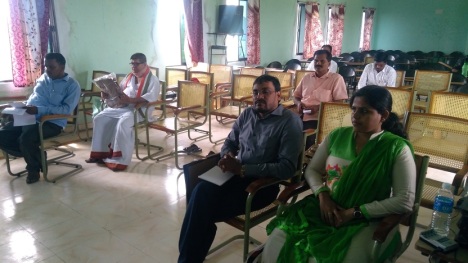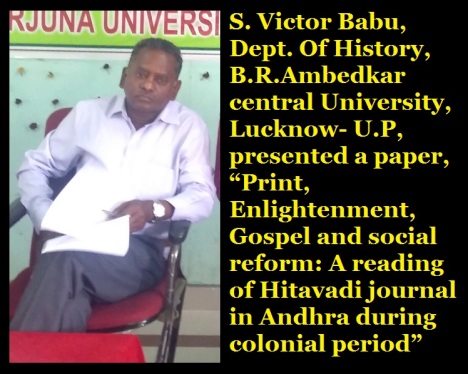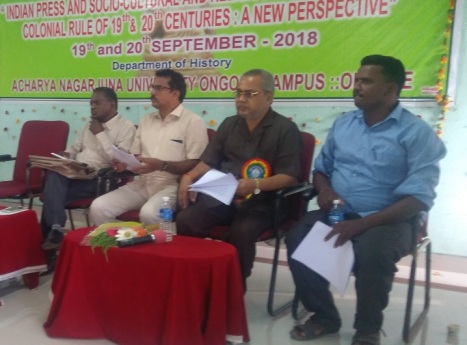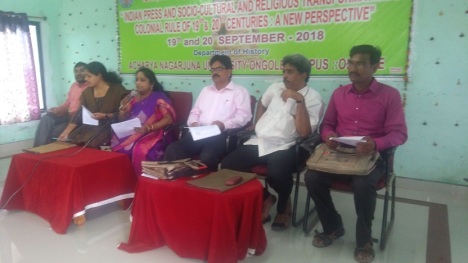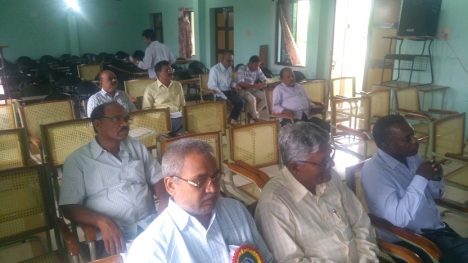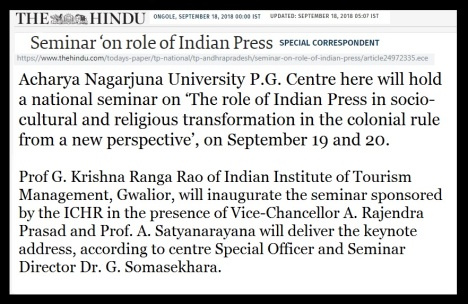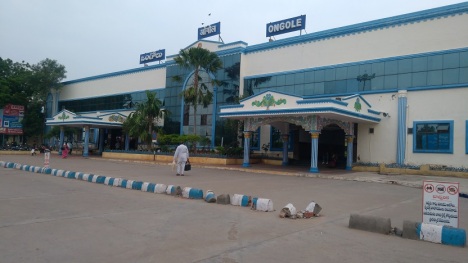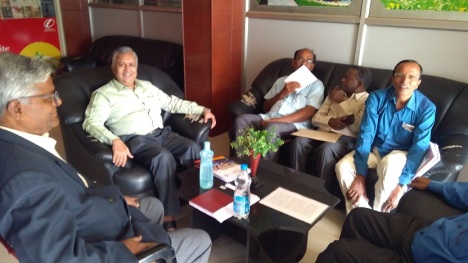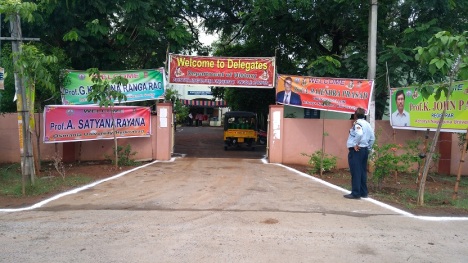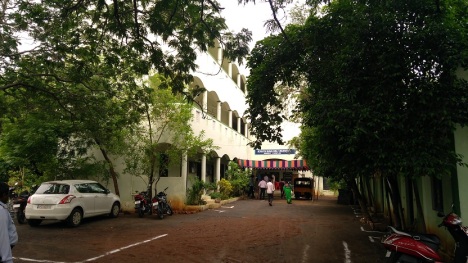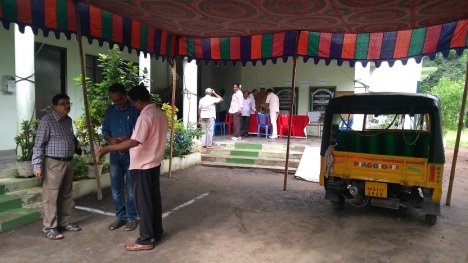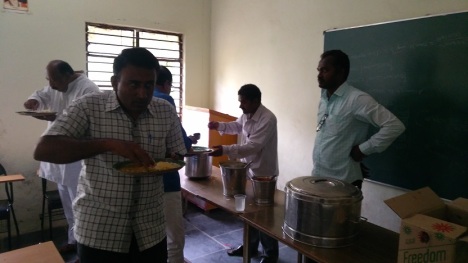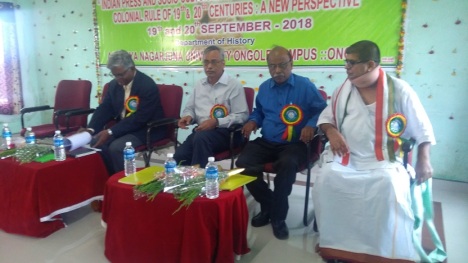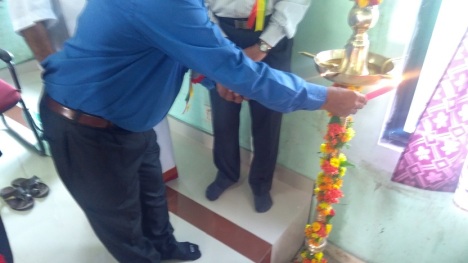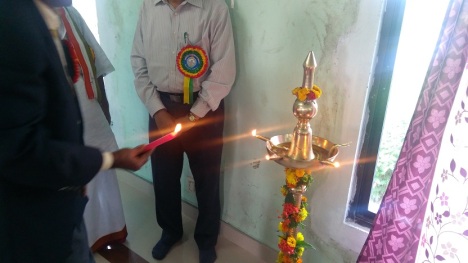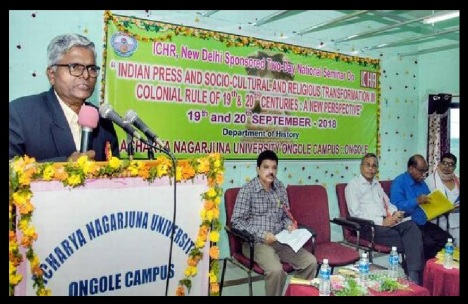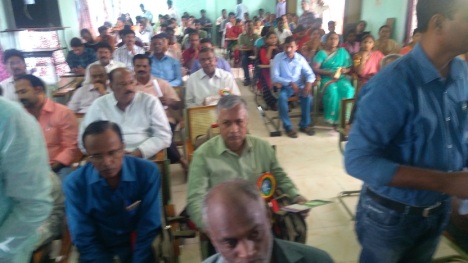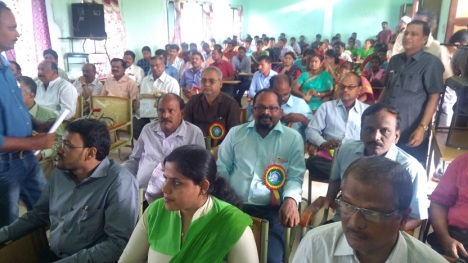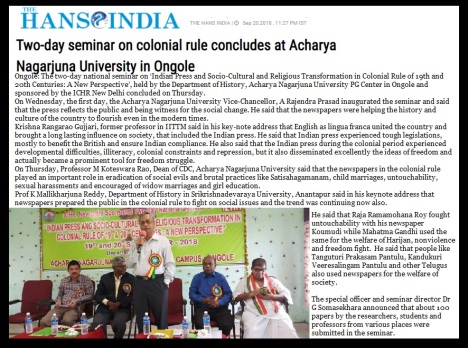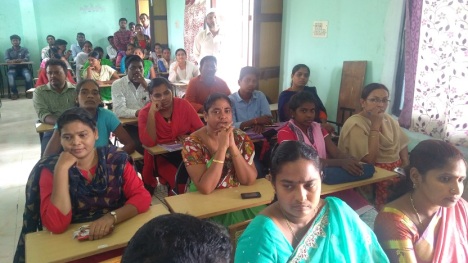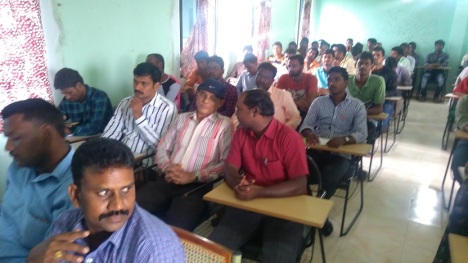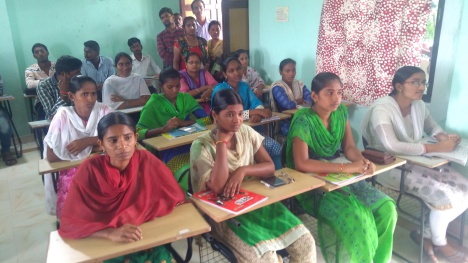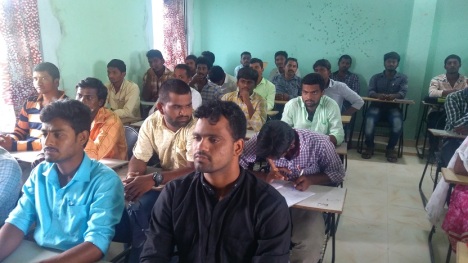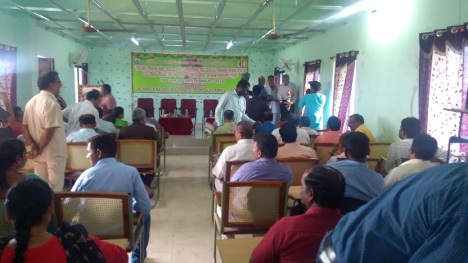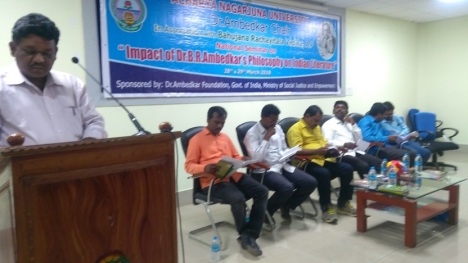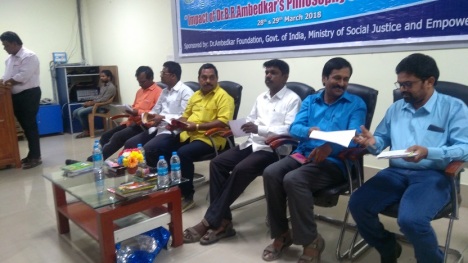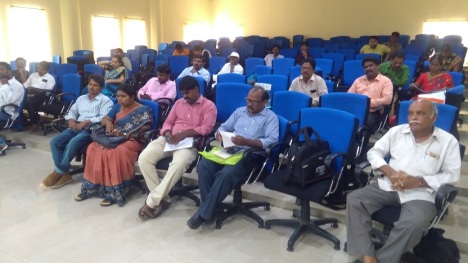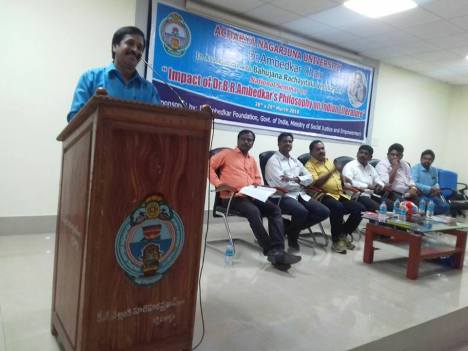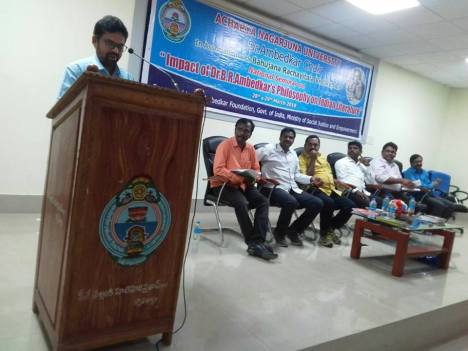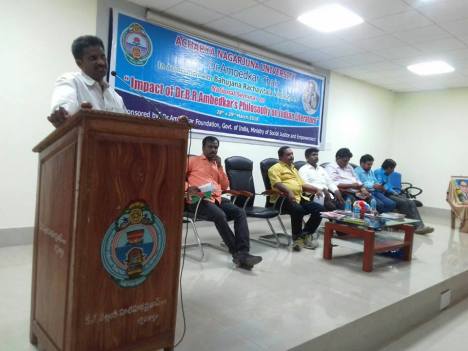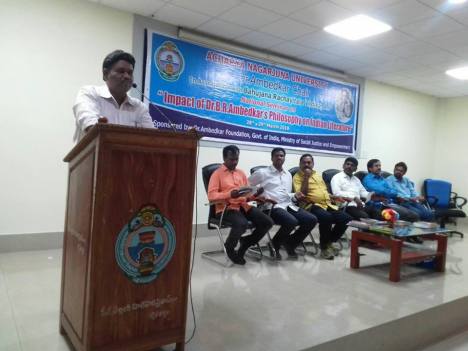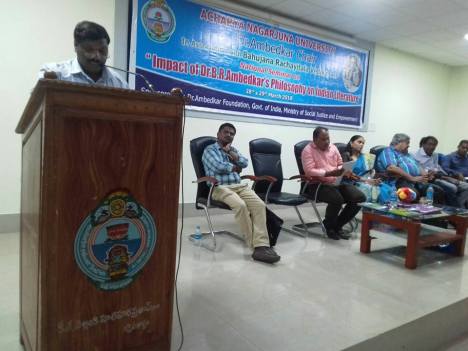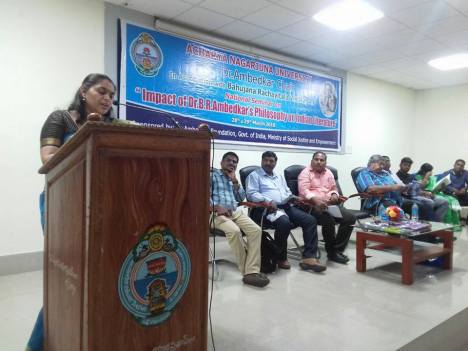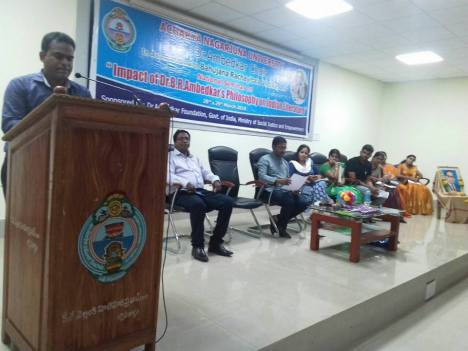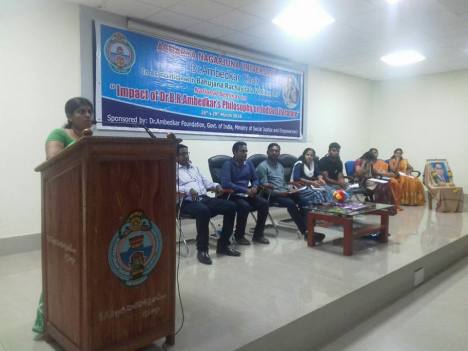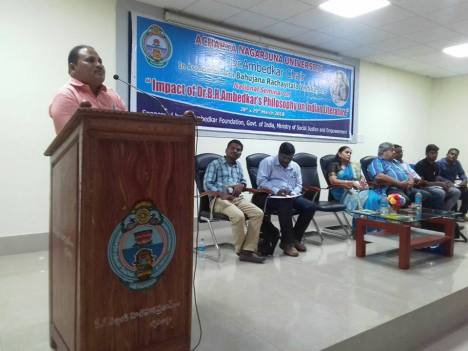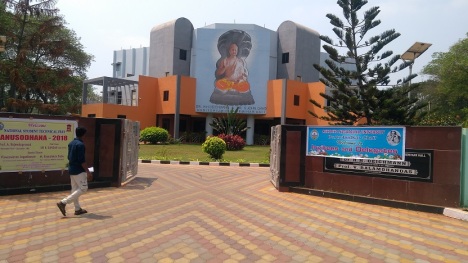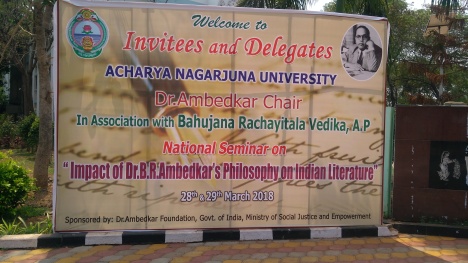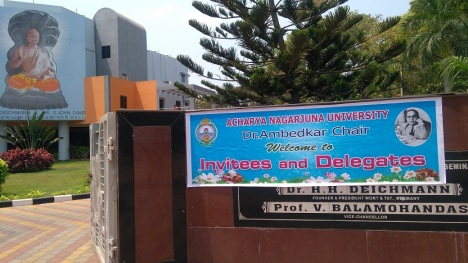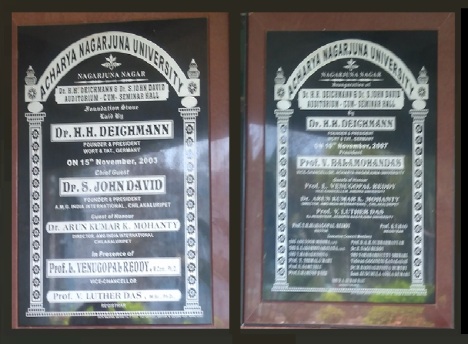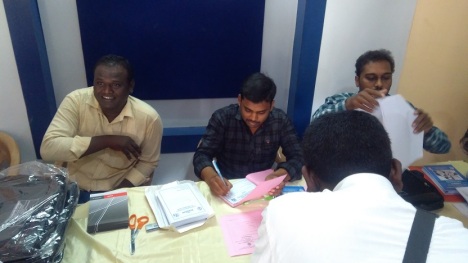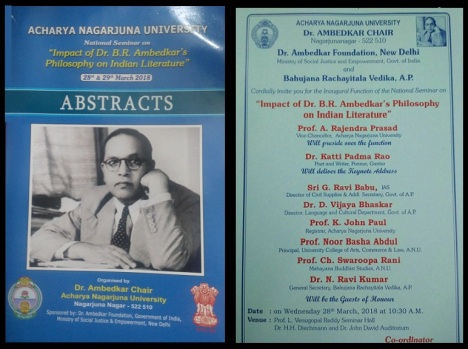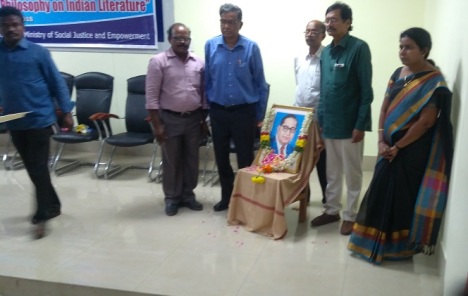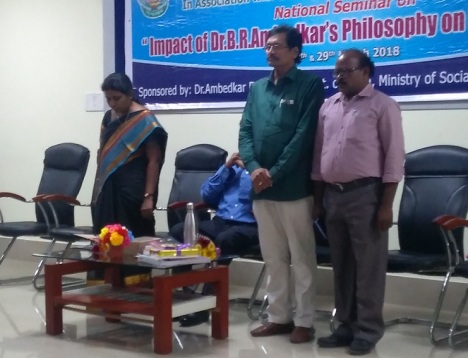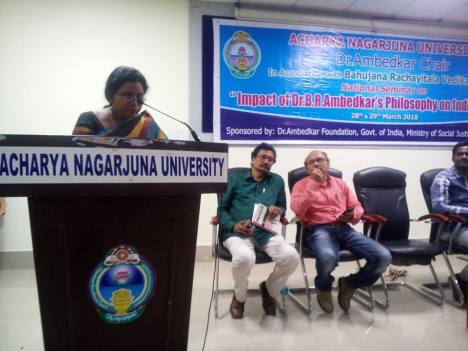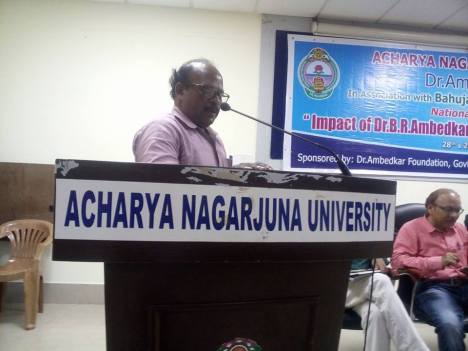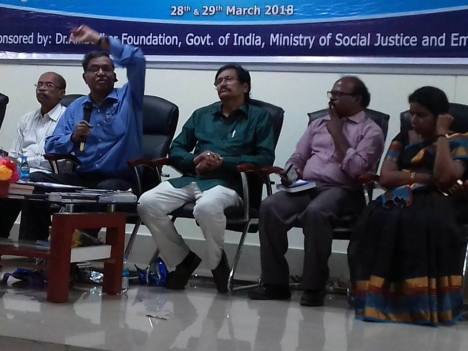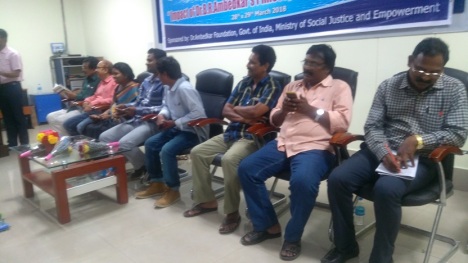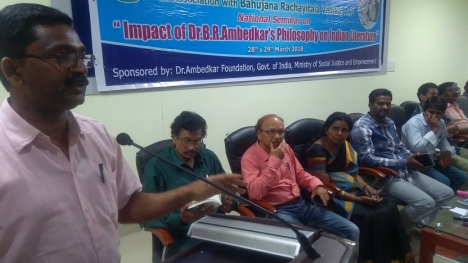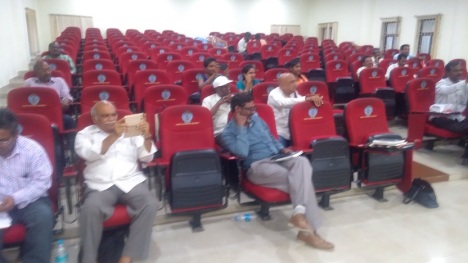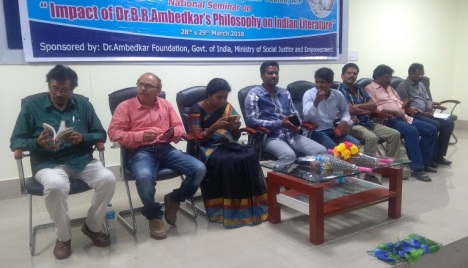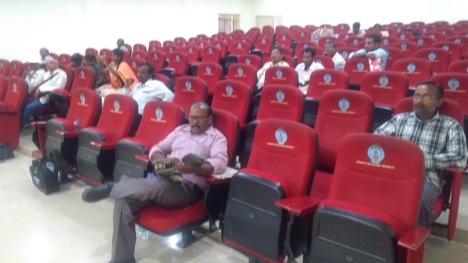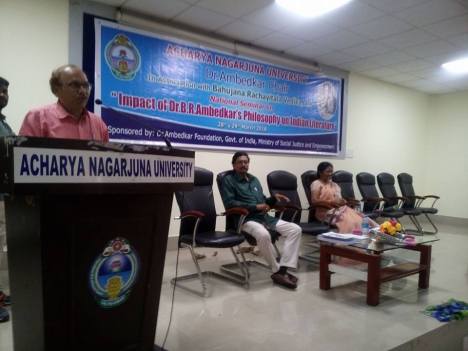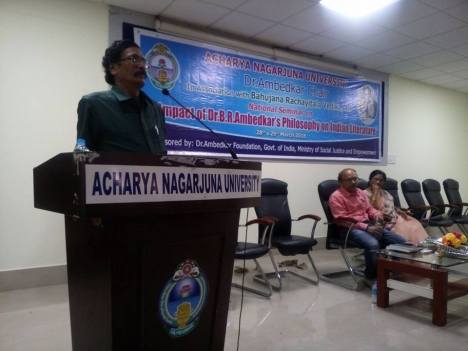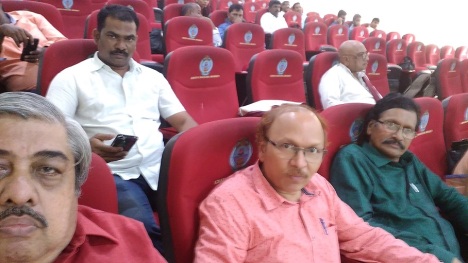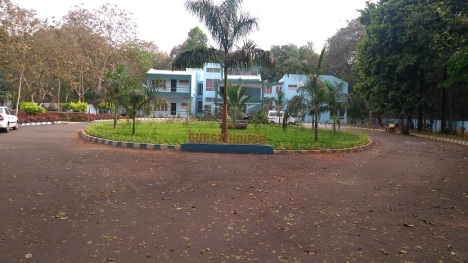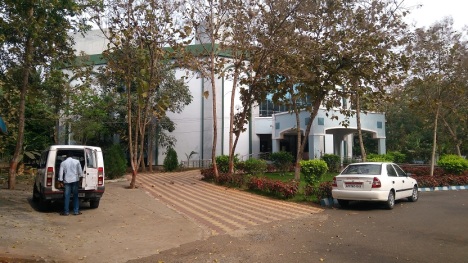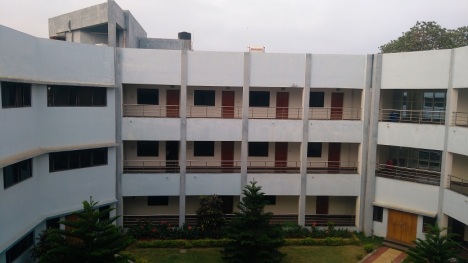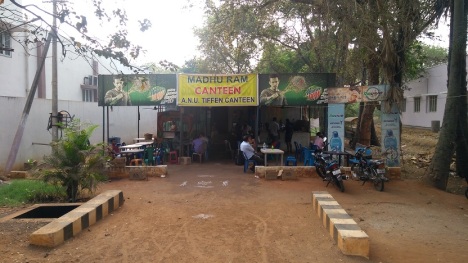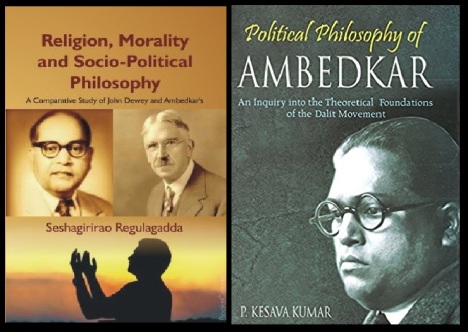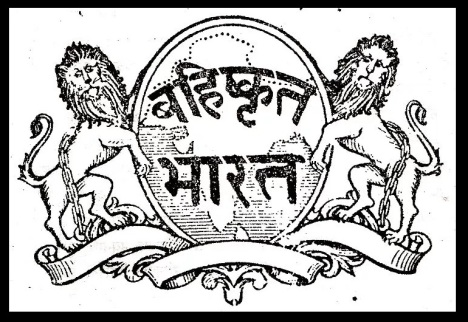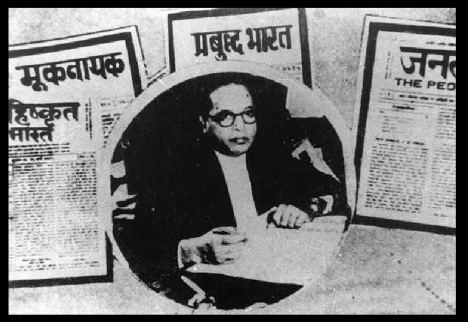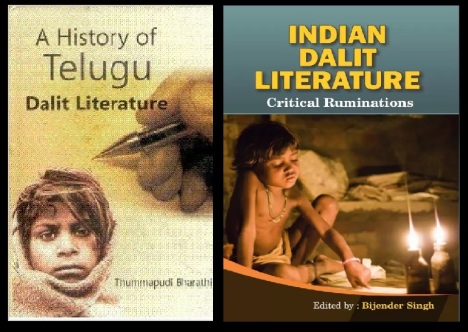The National Seminar on Rural Society, Culture and Economy in Telangana – Historical Perspective – held at the Kakatiya University on March 14th and 15th 2020 [1]
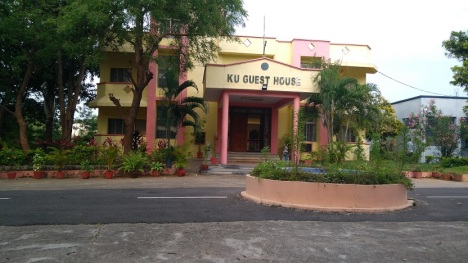
From Chennai to Kajipet: On March 14th, I had to leave Chennai for Kakatiya University to attend the National Seminar on Rural Society, Culture and Economy in Telangana – Historical Perspective to be held on March 14th and 15th 2020 at the Kakatiya University, Warangal, Telangana. However, there were calls from my friends and relatives from Hyderabad and other places informing to avoid going considering the prevailing conditions of Carona virus spread. I contacted Prof K. Vijaya Babu and he informed that there was no problem at KU and Warangal. As I had already booked tickets I decided to proceed. Some of my friends, who supposed to come, backed out on one or the other personal reasons. When I reached Central, I could find that the young persons, evidently working with IT industries, were conscious of and worried about, as they have to contact with foreigners, even in day-to-day dealings and interactions at the place work. In the compartments also, they were seen covering their faces with masks of different colours, varied shapes and various sizes. Of course, I too brought consciously, the regular one. Anyway, my conscious informed me that there was no necessity to get panic.
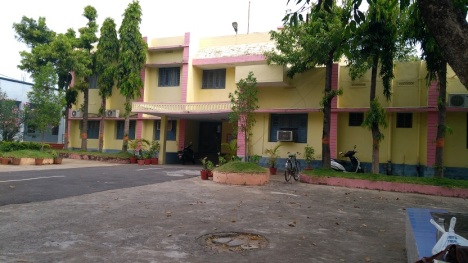
Kazipet Railway station, KU Guest House: I reached Kajipet in time. Slowly, I came out to get an auto. I reached the Guest House of Kakatiya University by auto, it was about 5 am. None was there. I went inside, switched on lights and fan and sat down. By 5.30, I contacted Prof Vijaya Babu and he informed that one student-volunteer would come to take to a room. After some time, one student came and he took to Room no.10. I started to complete my daily routine. But, I found that there was no heater and it was taken away cutting the wires and water connection tubes. So I informed the student-volunteer that as I have nervous problem and he changed my room to 9. Evidently, he knew that heater was not there etc., but yet, he had chosen it first and then changed. I got ready and came out by 9 am.
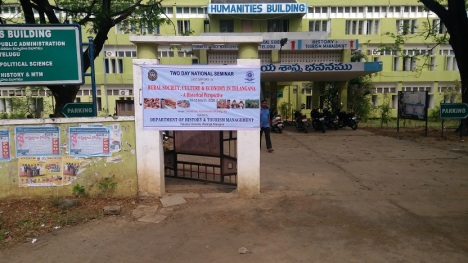
|
Prof K. Vijaya Babu, convenor, 11.00 to 11.07 am: The inaugural function was held at the Senate Hall. They were waiting for the Vice-Chancellor, but, he did not come. So they decided to start the function. The seminar coordinator Prof K. Vijaya Babu explained the theme of the seminar on March 14th at the time of inauguration[1]. During the Qutub Shahi (1518-1687), the Mughal (1687-1724) and the Asaf Jahi (1724-1947) rule several administrative reforms were introduced in Telangana. The Revenue Administration was redesigned and Revenue Farming (Contract) System was introduced by the Qutb Shahi and Asaf Jahi rulers. Their Revenue Reforms resulted in the emergence of dominant Sudhra Communities like Reddies and Velamas[2] as revenue farmers. The dominant landed gentry had established their power centers in the form of ‘Ghadies’ in all the villages throughout Telangana[3]. There was a concentration of revenue, and judicial powers in the hands of these aristocratic families and they established their firm control over the people. The village officials like Patwaries and Patels used to serve the Land Lords in revenue administration, collection of taxes and maintenance of law and order in the villages. The Jagirdars as they were powerful could grab the lands by fraud from the actual cultivators. There was a concentration of land in the hands of certain caste groups like Reddy and Velama communities. These Jagirdars (Doras) also exploited the village people with an evil practice of ‘Vetti’ or forced labour[4]. These ruling families enjoyed the position and privileges as Jagirdars, Deshmukhs[5] and Deshpandias.
Traditionally the artisan and service castes were bound to the landlords in terms of certain caste obligations[6]: Carpenters and Blacksmiths (Vadla / Kammari) prepared and repaired agricultural implements, the Shepherds (Gollas) used to supply sheep and goats on the festival and other ceremonial occasions; the Washer men (Chakali) worked as messengers, the Mangalis served as barbers, the Toddy tappers (Goundla) supplied toddy, the Madigas used to provide leather goods. The Malas and Madigas worked as agricultural laborers. The agricultural communities, pastoral, communities, artisans, service castes, dalits, dependent castes a the rural areas, were leading a miserable life, though they were extending their services as per their traditional occupations. These poor people without any landed properties had become either tenants at will or landless labourers. Thus, the agrarian structure of Rural Telangana was marked by extreme inequalities in ownership of land and other means of production.
Change taken place[7]: It is observed that in the specific context of Telangana, the evolution of land tenure systems and agrarian relations were shaped by certain historical developments which facilitated the concentration of landed property in the hands of certain castes. Since they owned landed property they could invest their surplus income in developing commercial and industrial establishments and emerged as modern capitalist class. These families have settled in urban areas and also developed modern educational Institutions with the support of the Government to provide advanced technical education to their children. After accumulating a lot of wealth as capitalists, they entered into democratic politics and became political leaders and have been enjoying the higher positions and privileges at the state and central level. The Weaker Sections and Dalits have also joined these modern educational institutions with the support of social welfare schemes introduced by the government. These modern educated youth entered into government services as subordinate staff. Some of them emerged as intellectuals and trying to bring social change in our society during the last several decades in independent India.
Fairs and Festivals[8]: In Telangana, one can clearly witness the composite, pluralistic and inclusive culture and traditions. Be it Bathukamma, Sankranthi, Moharram, or Christmas, the region is known for secular traditions. Bathukamma is a colourful and vibrant floral festival of Telangana, celebrated by women, with flowers. The festival is the pride of Telangana’s cultural identity. Vijayadashami, also known as Dussehra. The festival symbolizes the victory of good over evil, is celebrated with traditional fervour, devotion across Telangana. Mother goddess worship is very popular in all the villages of Telangana. Bonalu is a Hindu Festival where Goddess Mahakali is worshipped. It is celebrated in Telangana state, especially in the twin cities of Hyderabad and Secunderabad. The Tribal people in Adilabad district celebrate Nagobha festival. Sammakka Saralamma Jatara is a world-renowned tribal festival celebrated at Medaram in Mulugu district. In Warangal Inavole, Kommala, Komaravelli Jataras are popular folk fairs.
Seminar sub-themes[9]: The seminar brings to light the locally dominant castes and the kind of dominance they exercised over the Socio-Economic life of the people. The Rural society and Caste System in Telangana have to be analyzed from Political, Economic, Social and Cultural Perspectives. The Sub –Themes are : 1. The Geo- Historical aspects of Telangana. 2. Social Structure and Economic Conditions. nomadic groups, who were involved in the production process in 5. Dependent Castes and Folk Arts. 6. Tribes and their Culture. 7. Conditions of Weaker Sections, Dalits and Women. 8. Artisans and Handicrafts. 9. Fairs and Festivals. 10. Heritage Sites- Tourism Potential.
© K. V. Ramakrishna Rao 17-03-2020
|
[1] From the brochure sent by the organizers. He read from the brochure, as I could follow him carefully.
[2] : Tradition says that the velamas were in race of Khastriya, who ruled over the country to the north of Narmada river. As they vanquished by a mightier people Raja Pratapa Rudra of Kakatiya dynasty attracted by their physique and commanding features welcomed them to his Kingdom and conferred on them the command of 77 forts in his kingdom. They gradually became agriculturists and traders. In Telangana their main occupation is agriculture. Many of them held lands and worked as tenants. A few of the velamas were rich landlords and village officers.
[3] The social conditions of Jagirdari village are revealed round the Gadee in 19th, and first half of the 20th century. Gadee is the residue place of Dora, in which he lives with his family members, Adabapa and Dasis (slave girls) and their children and a large number of vetti workers and bhagelas This place is the centre of political, social and economical activities. What decision was taken in Gadee is implemented in Jagir village. These Gadees persisted in 19th century and first half of the 20th century.
[4] This system prevails in Telangana during 19 th century and first half of the 20th century. By the 18th century in deccan, political stabilisation was established by Asafjahs. They initiated various tenures to bring the land under cultivation. “Like most of the Deccan states, in Telangana too “bara balutadars” played an important role in colonising the region and setting up villages and developing agriculture”
[5] The deshmukhs in the process of becoming landlords with their own patta lands practically usurped the authority of the state and kept the whole country side in their possession to establish their Rajyam. They established their authority over government property. They established their supremacy over wastelands, government lands, trees, tanks, steams in the village. They imposed restriction on peasants and shepherds grazing their cattle and on labourers collecting firewood from such common resource lands.
[6] From the brochure sent by the organizers. He read from the brochure, as I could follow him carefully
[7] From the brochure sent by the organizers. He read from the brochure, as I could follow him carefully
[8] From the brochure sent by the organizers. He read from the brochure, as I could follow him carefully
[9] From the brochure sent by the organizers. He read from the brochure, as I could follow him carefully
[10] Komatis are an integral part of the peasant society. This is the name for Telugu traders, shopkeepers and money lenders mostly found in Telangana. They played crucial role in agricultural finance and benefitted immensely. It is considered to be a wealthy and prosperous caste. They were mainly found in their traditional occupation i.e. trade, commerce and money lending. Very few of them worked as cultivators and agricultural labourers.
[11] During late nineteenth century the deshmukhs in the process of becoming land lords usurped the authority of the state and kept the whole country side in their possession and established Dorala rajyam. In Nalgonda District the most notorious, dora families were Rapaka, Janna Reddy, Nukala, Rama Sahayam, Pingali and Lingala. The number of families increased in last quarter of nineteenth century through the matrimonial relations established with the doras and following the doras practices. New Doras converted these services castes as “Vetti workers”. Untouchables and low caste peoples were converted as “bhagela”s. As the landlords owned large land fields due to reforms of Salarjung and they were forced to cultivate commercial crops like castor and groundnut by the British. These circumstances forced the landlords to introduce vetti and bhagela system.
Filed under: Adapa satyanarayana, agrarian, agriculture, ambedkar, andhra, archaeology, bathukamma, bifurcate, brahmin, conference, constitution, control, coolie, dalit, darga, deshmuk, deshmukh, dora, Dravida, economics, economy, emotion, gadi, gender, goddess, helper, heritage, historicity, historiography, history, ICHR, interpretation, jagirdar, K. V. Ramakrishna Rao, kakatiya, kakatiya university, Khammam, marginalized, mohammedan, moharram, muslim, nationalism, nationality, Osman Ali Khan, patel, patwari, pir, Rasool Khan, rural society, ryat, services, shia, social justice, social reform, Social Reform Movement, sunni, telangana, Telangana History Congress, telengana, telugu, tomb, turk, turukka, turukkavadu, velama, village republic, worker, zakirdar | Tagged: Adapa satyanarayana, bathukamma, bonded labour, caste, culture, dalit christian, dalit muslim, dalit politics, deshmukh, dora, kakatiya, land, land lord, land owner, madiga, Mala, mohammedan, moharram, muslim, patel, patnaik, patwari, pir, political economy, rural society, ryat, ryatwari, sankaranti, slave, social justice, social reform, tax, tax collection, village republic | 1 Comment »





